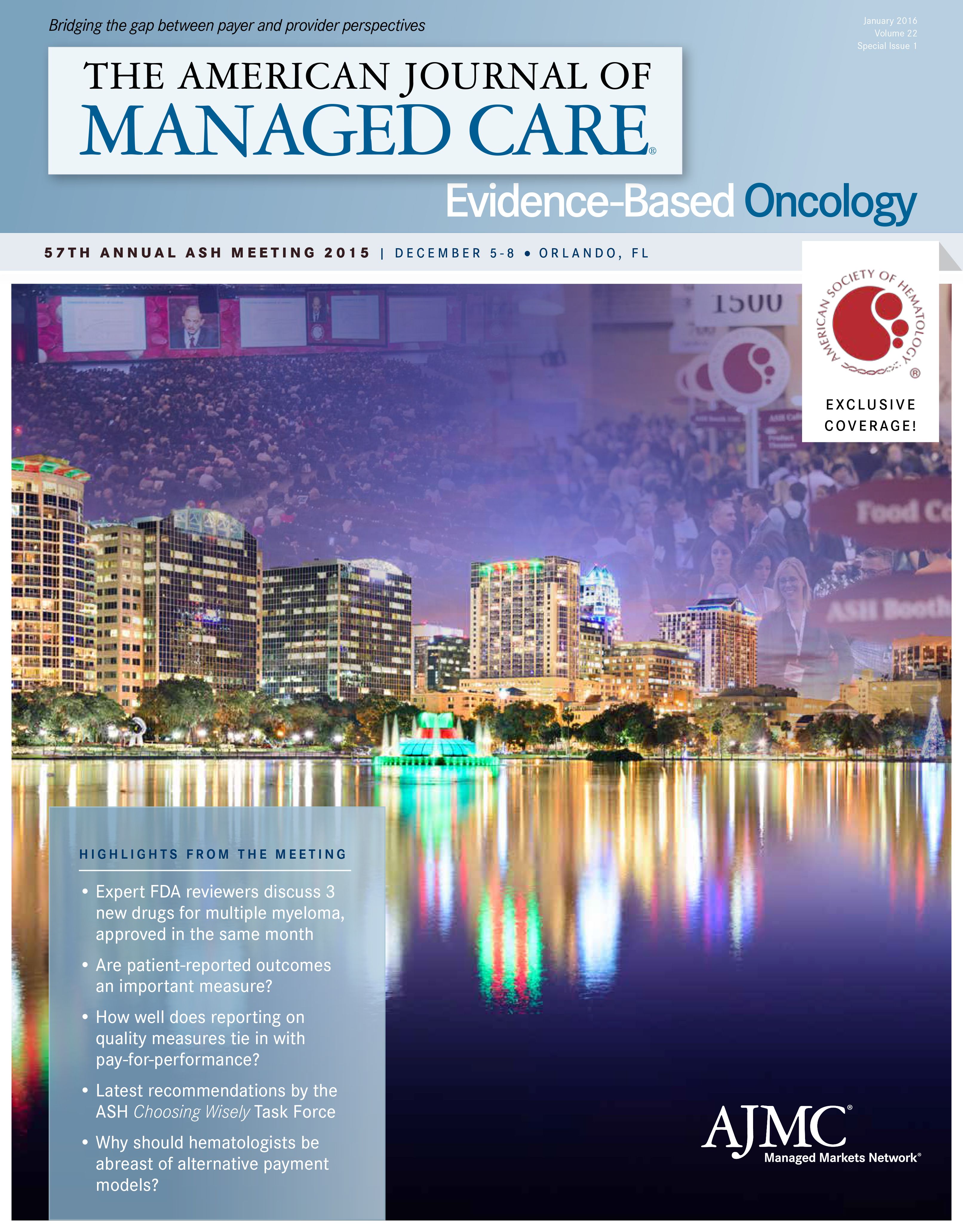- Center on Health Equity & Access
- Clinical
- Health Care Cost
- Health Care Delivery
- Insurance
- Policy
- Technology
- Value-Based Care
Healthcare Utilization in Children With Sickle Cell Disease
At the annual meeting of the American Society of Hematology, researchers from the Aflac Cancer and Blood Disorders Center presented analysis evaluating the factors that influence health outcomes in children with sickle cell disease.
Sickle cell disease (SCD) is characterized by marked heterogeneity in clinical outcomes, severity, and utilization of health care services. SCD, a commonly inherited blood disorder resulting from abnormal hemoglobin, is associated with lifelong disabilities and can reduce life expectancy. The disease, which affects between 90,000 and 100,000 people in the United States, is estimated to exceed $1.1 billion annually in medical care costs, alone, for these patients, according to a study published in 2009 in the American Journal of Hematology.1 The heterogeneity of SCD is particularly evident in the utilization of inpatient hospital services, in that some children with SCD are frequently admitted to the hospital, while others are rarely or never admitted, at all. In addition, rates of readmission, within 30 days of hospital discharge, are high in SCD. However, the causes for this variability in utilization and high rates of readmission are not well understood.
To better understand the factors that influence this disparity in outcomes in children with SCD, researchers at the Aflac Cancer and Blood Disorders Center, Emory University School of Medicine, sought to determine rates and primary causes of SCD-related hospital utilization among children and adolescents with SCD. The poster was presented during a Health Services and Outcomes Research session at the annual meeting of the American Society of Hematology.2
Children with a confirmed diagnosis of SCD (n = 1331), living in the greater metro Atlanta area, were included in the study. These children had been treated at the Children’s Healthcare of Atlanta between January 1, 2010, and December 31, 2014. To ensure a substantial period of observation, individuals with 2 consecutive encounters greater than 18 months apart or with less than 2 years of observation, were excluded. Following a review of the patient’s hematologic and clinical data, individuals with rare SCD genotypes were excluded. The primary cause for each admission was determined through medical chart review and classified into 4 mutually exclusive categories: acute chest syndrome (ACS), pain crisis, fever/infection, and other complications of SCD. Scheduled hospitalizations for elective procedures were excluded. A hospitalization occurring within 7, 14, or 30 days of a previous hospital discharge was defined as a readmission.
The study included a nearly equal distribution of male and female patients, with age, at the time of the earliest encounter, ranging from 2 months to 19 years. The children were observed for an average period of 4.02 years. Of the 5317 hospitalizations among the 1331 children, 19.4% were never hospitalized, and 44.8% were hospitalized less than once each year. With the lowest hospitalization rates observed among children between 4 and 9 years of age, overall and cause-specific hospitalization rates varied by age and SCD genotype; pain was the dominating reason for hospitalization (responsible for 53.1% of admissions). Older children with SCD were hospitalized more often for pain-related care, and less often for fever or infection.
Of the 1073 patients who were admitted, the authors found that 356 were readmitted within 30 days of a previous admission at least once. All-cause 7-, 14-, and 30-day readmission rates were 5.6%, 10.0%, and 18.2%, respectively. Thirty-day readmission rates were lower among younger age groups (15.7% for age 1 to 3 years, 15.3% for 4 to 6 years, and 15.8% for 7 to 9 years), but higher in older patients (18.3% for 10 to 12 years, 19.9% for 13 to 15 years, and 23.3% for 16 to 18 years). Readmission rates were highest for pain (20.4%) and lowest for ACS (11.3%), independent of gender, and 34% of all 30-day readmissions occurred during the first week of discharge.
These results led the authors to the following conclusions:
• SCD-related hospitalization rates were highest in early life and in later adolescence.
• Admissions for fever or infection were most common in younger children, and admissions for pain crises in older children.
• Rates of readmission strongly correlated with age, and were highest following admissions for pain.
EBO
REFERENCES
1. Dangi-Garimella S. Care plans to reduce healthcare utilization in sickle cell disease. Am J Manag Care. 2015;21(SP1):SP8-SP9.
2. Theodore R, Barry V, Quarmyne M, Dampier C, Lane PA. Inpatient utilization among children and adolescents with sickle cell disease: analysis of a large populated-based retrospective cohort. American Society of Hematology website. https://ash.confex.com/ash/2015/webprogram/Paper86574.html. Accessed December 20, 2015.
• The risk of 30-day readmission is highest in the first 7 days following discharge in this study population.

